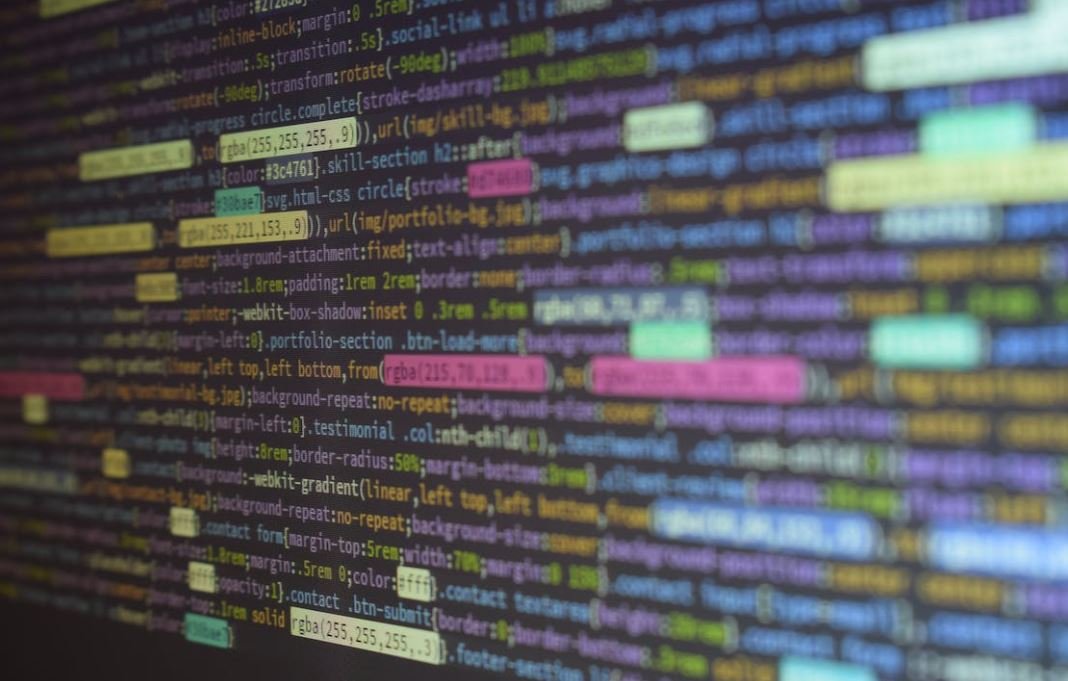AI and Video Production
Artificial Intelligence (AI) is revolutionizing numerous industries, and video production is no exception. With its ability to analyze vast amounts of data and perform complex tasks, AI is streamlining and enhancing the video production process. From pre-production to post-production, AI is transforming how videos are created, edited, and distributed. This article explores the impact of AI on video production and highlights its benefits and challenges.
Key Takeaways
- AI is revolutionizing the video production industry.
- It enhances various stages of video production, including pre-production, production, and post-production.
- AI-powered tools automate time-consuming tasks and improve efficiency.
- Integrating AI into video production requires a balance between human creativity and machine capabilities.
**AI and Pre-Production:**
In the pre-production phase, AI is a valuable asset for video producers. AI algorithms can analyze vast amounts of data, such as audience preferences, market trends, and social media metrics, to provide valuable insights. This data-driven approach helps video producers make informed decisions about the content, style, and messaging of their videos. *AI also enables the creation of personalized video content tailored to individual viewers*, enhancing engagement and conversion rates.
One particularly useful AI tool for pre-production is facial recognition technology. By analyzing facial expressions and emotions, AI can identify the optimal moments for capturing specific shots and angles, improving storytelling and emotive impact. *This technology empowers video producers to create emotionally compelling narratives* that resonate with their target audience.
**AI and Production:**
During the production phase, AI simplifies complex tasks and improves efficiency. AI-powered cameras and drones can autonomously capture high-quality footage, adjusting settings in real-time to optimize lighting, focus, and framing. This automation saves time and reduces the need for extensive manual adjustments by camera operators. *By eliminating mundane tasks, AI allows video producers to focus more on creative aspects of the production process*.
Another application of AI in video production is scene recognition. By analyzing the visual composition of a scene, AI can automatically suggest shot compositions and camera movements. This technology assists video producers in capturing dynamic and visually appealing shots without extensive planning or trial and error. *AI empowers video producers with visual intelligence, enriching their storytelling capabilities*
Tables
| AI Applications in Video Production | Benefits |
|---|---|
| Pre-production data analysis | Improved decision-making and personalized content. |
| Facial recognition technology | Enhanced storytelling and emotional impact. |
| AI-powered cameras and drones | Efficiency, time-saving, and focus on creative aspects. |
| Scene recognition | Dynamic and visually appealing shots with less planning. |
**AI and Post-Production:**
In the post-production phase, AI assists in tasks such as video editing, color grading, and visual effects. AI-powered software can analyze the raw footage, automatically identifying and tagging key moments, scenes, and objects. This streamlines the editing process and helps video editors find the most relevant shots quickly. *AI can even generate rough cuts or assemble complete video sequences automatically based on predefined style guidelines and templates*.
AI algorithms also enhance the color grading process by analyzing the content and automatically suggesting appropriate color corrections and adjustments. This saves time and ensures visual consistency throughout the video. *By leveraging AI in post-production, video producers can achieve polished and professional results more efficiently*
Tables
| AI Technologies in Post-Production | Benefits |
|---|---|
| Automatic key moment tagging | Efficient editing and quick retrieval of relevant shots. |
| Automated rough cut generation | Speeds up editing process and meets style guidelines. |
| AI-powered color grading | Time-saving and consistent visual aesthetics. |
**Challenges and Considerations:**
While AI offers significant advantages in video production, it’s essential to consider its limitations and potential challenges. AI technology is continually evolving, and video producers must adapt and stay updated to leverage the latest advancements. Furthermore, integrating AI into video production requires a delicate balance between human creativity and machine capabilities. *Maintaining a human touch and creative vision while harnessing the power of AI is crucial for producing impactful and authentic video content*.
As AI becomes more prevalent in video production, ethical considerations also arise. Protecting user data and privacy should be a priority, especially when leveraging AI for personalization. *Ensuring transparency and giving users control over their data builds trust and long-term audience relationships*.
AI is transforming the way videos are produced, edited, and distributed. Its data-driven insights, automation capabilities, and creative enhancements make it an invaluable tool for video producers. By embracing AI technology and leveraging its power, video production becomes more efficient, engaging, and impactful. So, embrace the power of AI and unlock new possibilities in your video production endeavors!

Common Misconceptions
Misconception 1: AI will replace human video producers
One common misconception people have is that AI will completely replace human video producers. However, this is not true. While AI can automate certain aspects of video production, such as editing and captioning, it cannot replace the creativity, storytelling ability, and emotional intelligence that human producers bring to the table.
- AI can assist with time-consuming tasks like video editing.
- Human video producers have the ability to think critically and make creative decisions.
- Emotional intelligence is crucial for understanding the audience and creating impactful videos.
Misconception 2: AI can create original video content
Another misconception is that AI has the ability to create original video content from scratch. While AI can analyze data and generate recommendations, it lacks the creative thinking and originality that human creators possess. AI can be a helpful tool in the video production process, but it cannot replace the imaginative ideas and artistic vision that human producers bring.
- AI can analyze data and provide insights for content creation.
- Human creators possess the ability to think outside the box and come up with unique ideas.
- Artistic vision is essential for creating original and engaging video content.
Misconception 3: AI can accurately understand and interpret video context
Many people believe that AI algorithms can accurately understand and interpret video context. However, AI still struggles with complex and nuanced visual and auditory comprehension. While AI has made significant advancements in areas like object recognition, it is far from being able to fully interpret the emotions, intentions, and subtle details in video content.
- AI algorithms can recognize objects and patterns in videos.
- Understanding emotions, intentions, and subtle details in videos requires human perception.
- AI struggles with complex and nuanced visual and auditory comprehension.
Misconception 4: AI can fully automate the video production process
Some people mistakenly believe that AI can fully automate the video production process, from start to finish. While AI can automate certain repetitive tasks like metadata tagging and content organization, it cannot replace the strategic planning, artistic decision-making, and human touch required in video production.
- AI can automate repetitive tasks like metadata tagging.
- Strategic planning and artistic decision-making require human input.
- Human touch is essential for creating engaging and emotionally impactful videos.
Misconception 5: AI-generated videos are indistinguishable from human-produced videos
Lastly, there is a misconception that AI-generated videos are indistinguishable from videos produced by humans. While AI-generated videos can be impressive in terms of content creation and realistic visual effects, there are often telltale signs that reveal their computer-generated nature, such as unnatural movements, lack of subtle details, and an absence of human-like emotions.
- AI-generated videos can be realistic in terms of visual effects.
- There are often telltale signs that reveal the AI-generated nature of videos.
- Human-produced videos have the ability to convey natural movements and subtle details.

AI-Generated Video Titles
In the world of video production, AI technology has enabled the automatic generation of captivating and engaging video titles. Below are some examples of AI-generated video titles, which exemplify its potential in enhancing video production.
| AI-Generated Video Titles |
|---|
| 1. “Unraveling the Mysteries of Quantum Physics” |
| 2. “Exploring the Hidden Marvels of the Amazon Rainforest” |
| 3. “A Dive into the Ancient Ruins of Machu Picchu” |
| 4. “Unveiling the Secrets of Artificial Intelligence” |
| 5. “Journeying through the Vibrant Streets of Tokyo” |
AI-Assisted Video Editing
Through AI technology, video editing has become more efficient and precise, with automated features significantly reducing the time required for post-production tasks. The following table showcases various aspects of video editing that are enhanced by AI implementation.
| AI-Assisted Video Editing | Benefits |
|---|---|
| Automated color correction | Ensures consistent and visually appealing color grading throughout the video |
| Scene recognition | Automatically identifies and tags different scenes for easy navigation during editing |
| Speech-to-text transcription | Converts spoken words into text, making it easier to locate specific dialogue or captions |
| Intelligent clip suggestion | Provides suggestions for alternative shots or angles to enhance the storytelling |
| Seamless audio synchronization | Automatically syncs audio and video tracks to eliminate timing inconsistencies |
AI-Driven Content Recommendations
With AI algorithms analyzing user preferences, video platforms can offer personalized content recommendations, ensuring a more tailored viewing experience. The table below demonstrates some examples of AI-driven content recommendations that enhance audience engagement.
| AI-Driven Content Recommendations | Personalized Recommendations |
|---|---|
| “Based on your interests, we recommend: Nature Documentaries” | Offers nature-themed videos reflecting the user’s previous viewing habits |
| “Popular with viewers like you: Science Fiction Films” | Provides science fiction movie suggestions based on similar user preferences |
| “Trending now: Food and Cooking Shows” | Recommends cooking-related content currently popular among the wider audience |
| “For you: Inspirational TED Talks” | Suggests motivational talks tailored to the user’s interest in personal growth |
AI-Powered Video Analytics
Through AI-enhanced video analytics, content creators and marketers gain valuable insights about viewer behavior and engagement. The table below presents key metrics and benefits associated with AI-powered video analytics.
| AI-Powered Video Analytics | Key Metrics | Benefits |
|---|---|---|
| Viewer demographics | Age, gender, location | Allows targeted content creation and optimized advertising strategies |
| Engagement duration | Average time watched | Identifies content sections that capture and retain viewer interest |
| Click-through rate (CTR) | Percentage of viewers clicking on external links | Measures the effectiveness of call-to-action placements and ad performance |
| Conversion rate | Percentage of viewers completing desired actions | Evaluates the effectiveness of video content in driving user conversions |
AI-Enhanced Video Effects
AI technology empowers video creators with unique capabilities to apply impressive effects, enhancing visual appeal and storytelling. The table below showcases various AI-enhanced video effects and their applications.
| AI-Enhanced Video Effects | Applications |
|---|---|
| Real-time object tracking | Allows for interactive elements, such as virtual reality or augmented reality components |
| Emotion recognition | Enables dynamic effects based on viewers’ emotions, intensifying engagement |
| Background removal | Creates a green screen-like effect, enabling the addition of various backgrounds |
| Time-lapse acceleration | Produces captivating time-lapse sequences, condensing extended periods into moments |
| Image style transfer | Applies artistic filters to video frames, imitating the style of famous paintings |
AI-Generated Video Thumbnails
AI algorithms can generate eye-catching video thumbnails that optimize user engagement and increase click-through rates. The table below provides examples of AI-generated video thumbnails.
| AI-Generated Video Thumbnails |
|---|
| A thrilling car chase |
| A breathtaking sunset over the Grand Canyon |
| An adorable puppy playing in a field |
| A captivating space exploration documentary |
| An awe-inspiring aerial view of a bustling city |
AI-Powered Video Transcription
Video transcription, powered by AI technology, enables the automatic conversion of audio content into text. The table below showcases the benefits of AI-powered video transcription.
| AI-Powered Video Transcription | Benefits |
|---|---|
| Improved accessibility | Allows individuals with hearing impairments to enjoy video content |
| Enhanced searchability | Facilitates keyword searches within video content for quick retrieval of specific information |
| Easier translation | Enables efficient translation of video content into multiple languages |
| Content indexing | Enables efficient organization and categorization of video collections |
AI-Driven Video Storyboarding
AI technology can revolutionize the video creation process by automating storyboarding, providing a visual representation of the narrative. The table below showcases the advantages of AI-driven video storyboarding.
| AI-Driven Video Storyboarding | Advantages |
|---|---|
| Time-saving | Reduces manual effort in creating storyboards, accelerating the pre-production process |
| Consistency | Ensures a consistent visual concept and narrative structure throughout the video |
| Collaboration | Facilitates collaborative decision-making among creative teams during pre-production |
| Visual clarity | Helps visualize the flow of scenes, camera angles, and transitions for effective storytelling |
AI-Enhanced Video Compression
AI algorithms offer advanced video compression techniques, significantly reducing file sizes without compromising quality. The table below highlights the benefits of AI-enhanced video compression.
| AI-Enhanced Video Compression | Benefits |
|---|---|
| Improved streaming performance | Enables smoother playback and reduced buffering for online video streaming |
| Extended storage capacity | Allows for more videos to be stored in limited disk space or cloud storage |
| Bandwidth optimization | Reduces data usage for video streaming, minimizing network congestion |
| Enhanced user experience | Delivers high-quality video content even in low-bandwidth environments |
The integration of AI technology into video production has revolutionized the industry, empowering creators with powerful tools to enhance creativity, efficiency, and audience engagement. AI’s impact is evident in various aspects of video production, ranging from automatic title generation, assisted editing, and content recommendations, to analytics, effects, and compression. With AI continuing to advance, the future of video production holds even more exciting possibilities for captivating and immersive content.
Frequently Asked Questions
AI and Video Production
Q: How can AI be used in video production?
A: AI can be used in video production to automate various tasks, such as video editing, color correction, and content analysis. It can also assist in generating captions, creating visual effects, and enhancing video quality.
Q: What are the benefits of using AI in video production?
A: By using AI in video production, professionals can save time and effort in tedious tasks, improve the overall quality of videos, and enhance the audience’s viewing experience. AI can also help in analyzing viewer preferences and optimizing video content accordingly.
Q: Can AI completely replace human involvement in video production?
A: While AI can automate certain aspects of video production, it cannot completely replace human involvement. Creative decision-making, storytelling, and understanding context are areas where human expertise and intuition still play a crucial role in producing compelling videos.
Q: What are some AI tools and software used in video production?
A: Some popular AI tools and software used in video production include Adobe Premiere Pro, Final Cut Pro X, DaVinci Resolve, and IBM Watson Video Enrichment. These tools leverage AI algorithms to enhance video editing, analysis, and content generation processes.
Q: How does AI assist in video editing?
A: AI-assisted video editing tools can automatically identify and tag key moments in video footage, perform automated color grading and correction, and suggest editing styles based on predefined templates or user preferences. This saves valuable time spent on manual editing tasks.
Q: Can AI be used to generate captions and subtitles for videos?
A: Yes, AI can be used to generate captions and subtitles for videos. Through automatic speech recognition (ASR) technologies, AI algorithms can transcribe speech and convert it into text, which can then be synchronized with the video to provide accurate captions and subtitles.
Q: How does AI contribute to video content analysis?
A: AI algorithms can analyze video content by detecting objects, faces, and scenes, recognizing emotions, identifying text, and extracting relevant metadata. This analysis provides valuable insights for video creators, marketers, and advertisers to optimize their content for better engagement and effectiveness.
Q: How can AI improve video quality?
A: AI can improve video quality by automatically reducing noise, enhancing image sharpness, stabilizing shaky footage, and upscaling low-resolution videos to higher resolutions. These AI-powered enhancements result in visually appealing and professional-looking videos.
Q: What are some ethical considerations when using AI in video production?
A: Ethical considerations when using AI in video production include respecting privacy rights, ensuring non-discriminatory content analysis, and maintaining transparency and accountability in automated processes. Additionally, it is important to avoid using AI in a manner that deceives or manipulates viewers.
Q: How is AI shaping the future of video production?
A: AI is set to revolutionize the future of video production by enabling faster and more efficient workflows, enhancing creative possibilities, and personalizing the viewing experience for individuals. It will empower video professionals to focus more on storytelling and creativity while leveraging AI for repetitive tasks.




